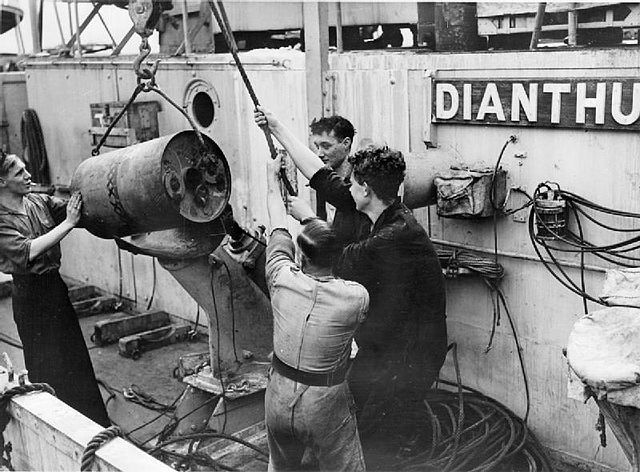A depth charge is an anti-submarine warfare (ASW) weapon designed to destroy submarines by detonating in the water near the target and subjecting it to a destructive hydraulic shock. Most depth charges use high explosives with a fuze set to detonate the charge, typically at a specific depth from the surface. Depth charges can be dropped by ships, patrol aircraft and helicopters.
US World War II Mark IX depth charge. Streamlined and equipped with fins to impart rotation, allowing it to fall in a straight trajectory with less chance of drifting off target. This depth charge contained 200 lb (91 kg) of Torpex.
The Mk 101 Lulu was a US nuclear depth bomb operational from 1958 to 1972
Depth charges on USS Cassin Young (DD-793)
Depth charge exploding after being released by HMS Ceylon
Anti-submarine warfare is a branch of underwater warfare that uses surface warships, aircraft, submarines, or other platforms, to find, track, and deter, damage, or destroy enemy submarines. Such operations are typically carried out to protect friendly shipping and coastal facilities from submarine attacks and to overcome blockades.
Royal Navy officers on the bridge of a destroyer on convoy escort duties keep a sharp look out for enemy submarines during the Battle of the Atlantic, October 1941
An example of an anti-submarine net, once protecting Halifax Harbour, Canada.
11-inch Howitzer Mk. I on British armed merchant cruiser HMS Patia in 1918, it had a range of just about 600 yards (550 m)
A depth charge thrower being loaded, aboard corvette HMS Dianthus, 14 August 1942








